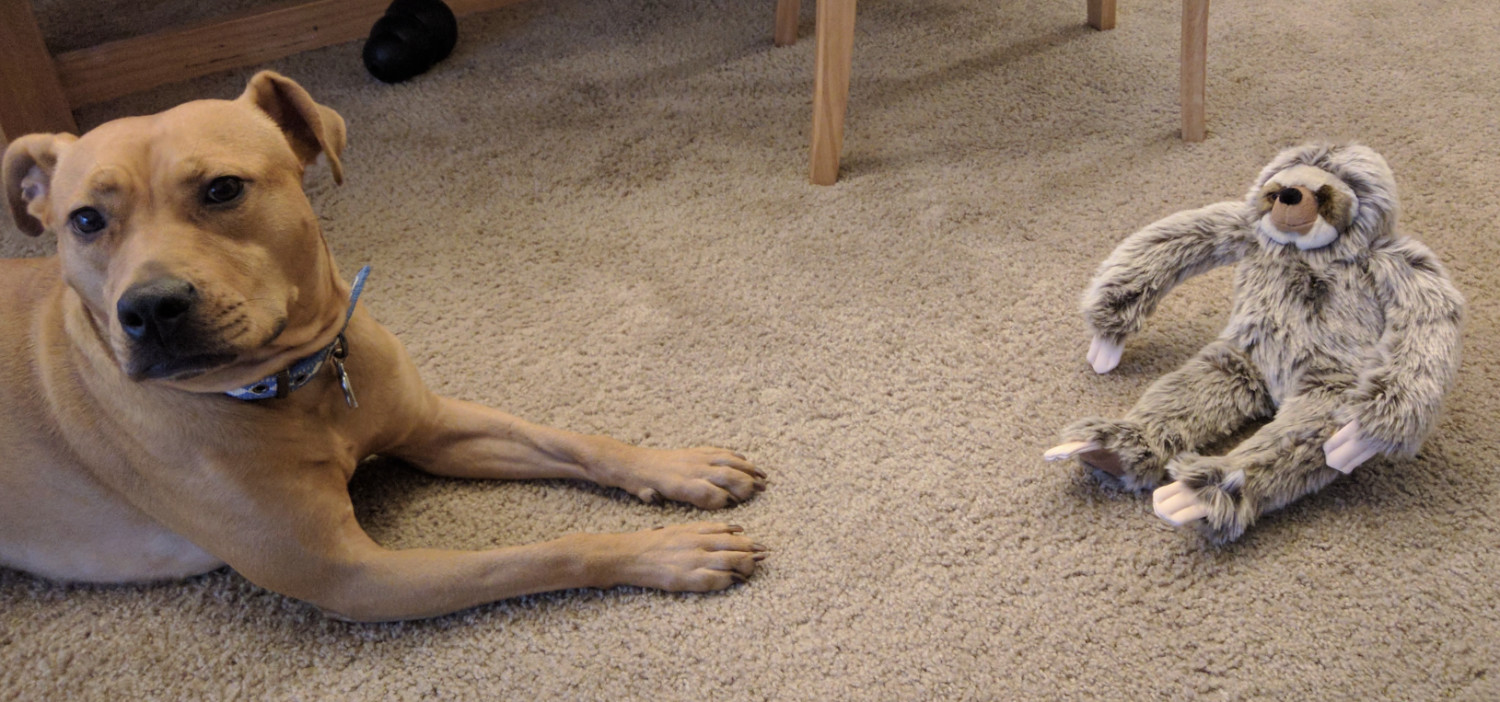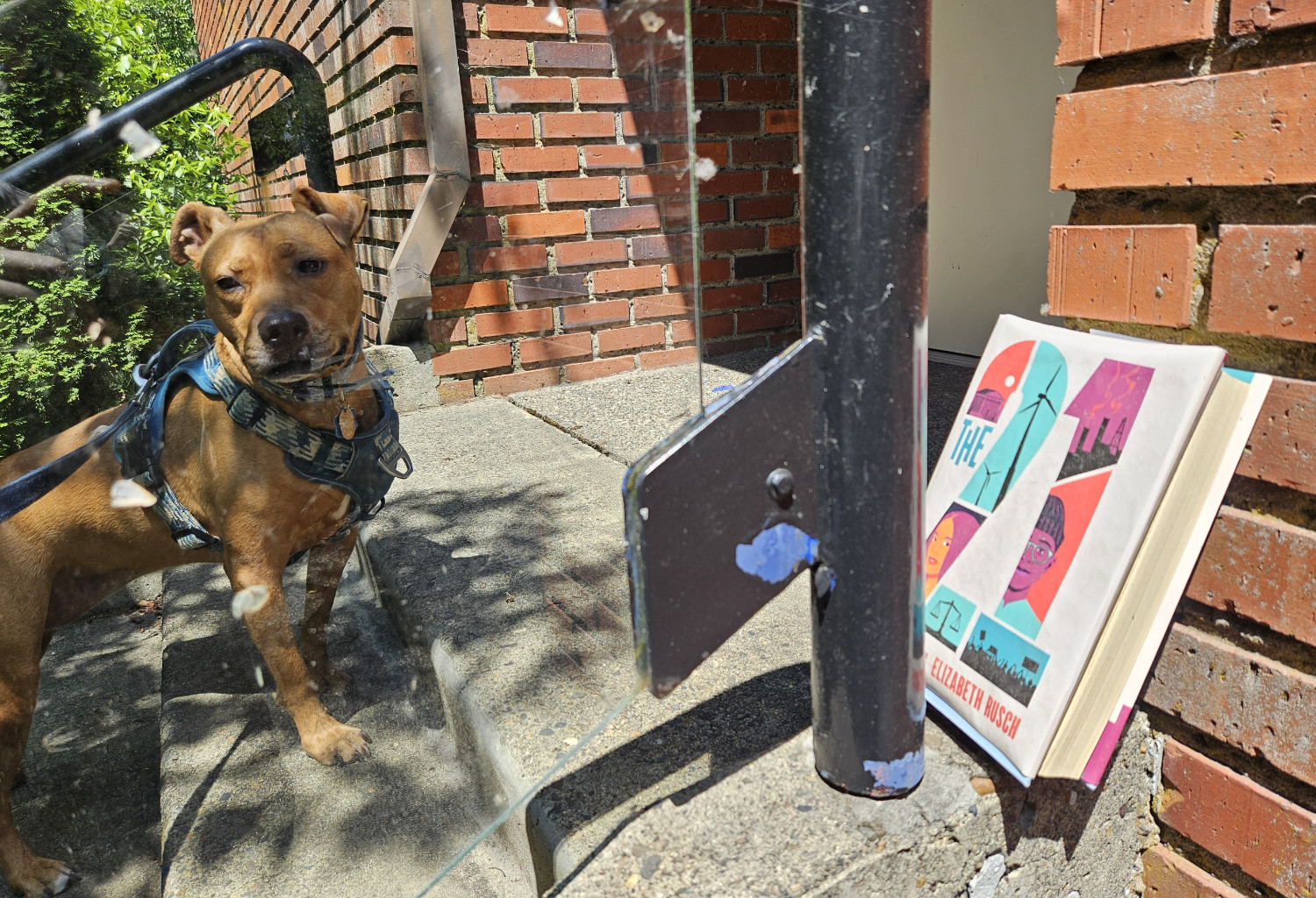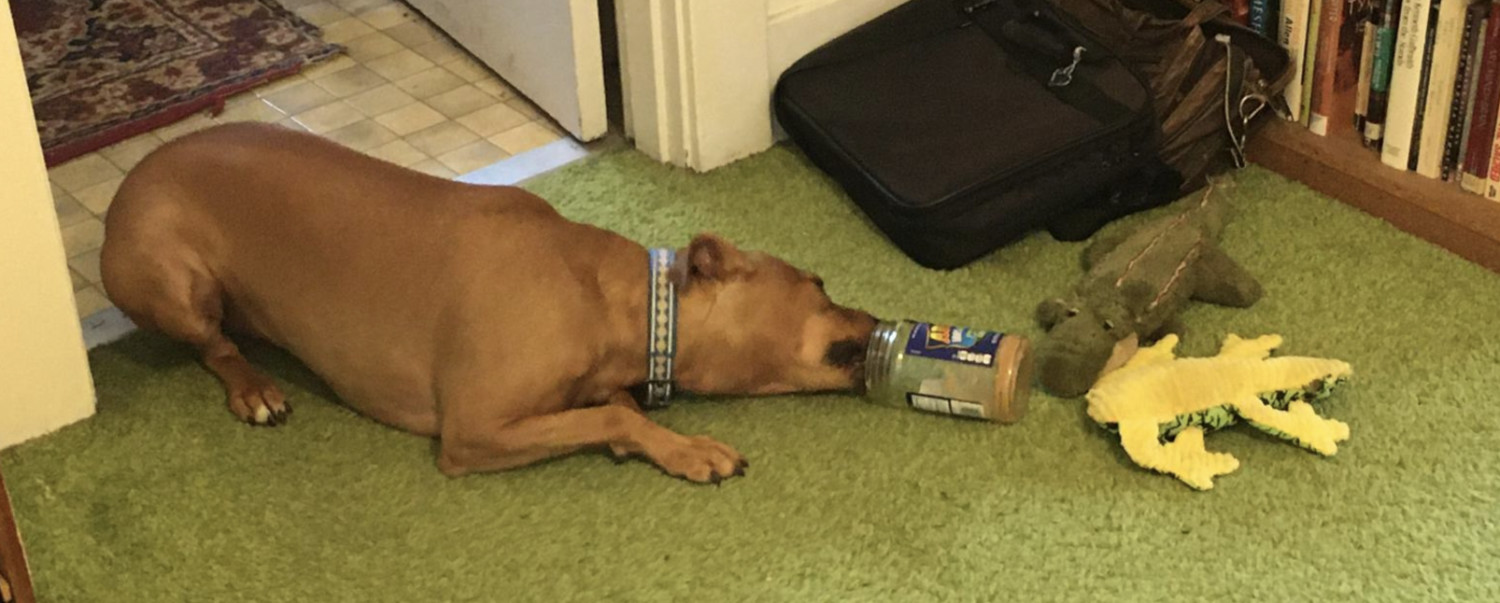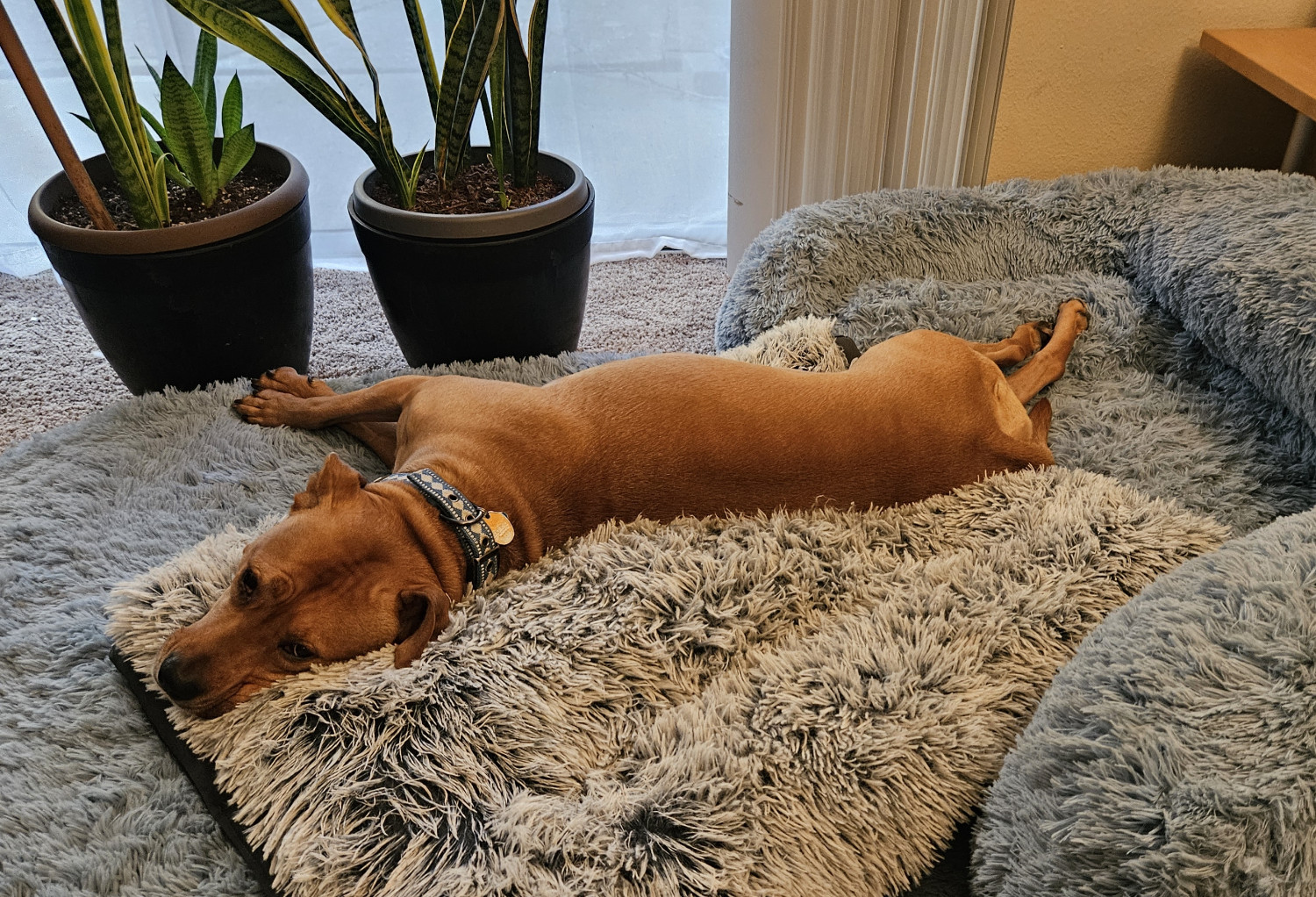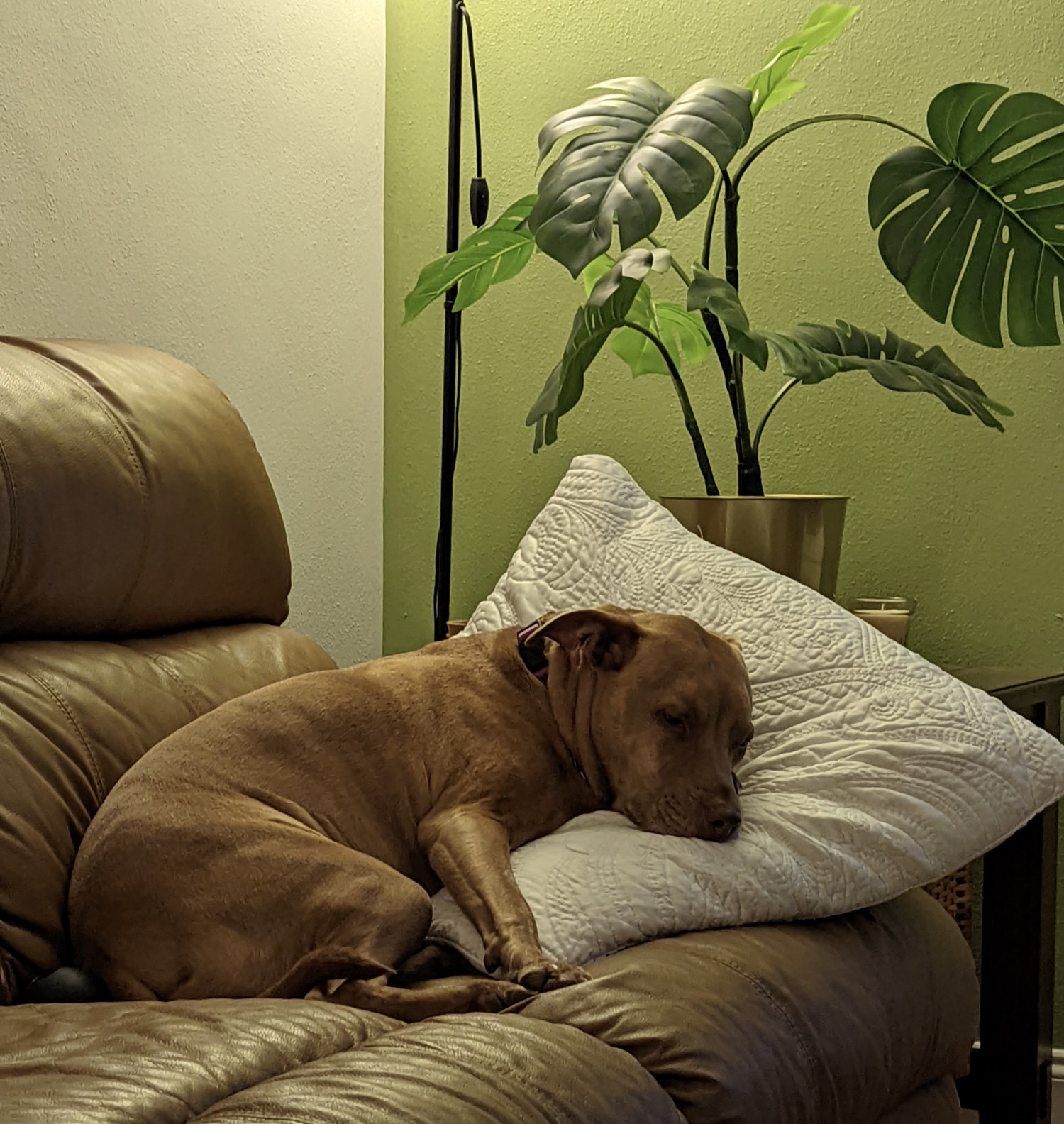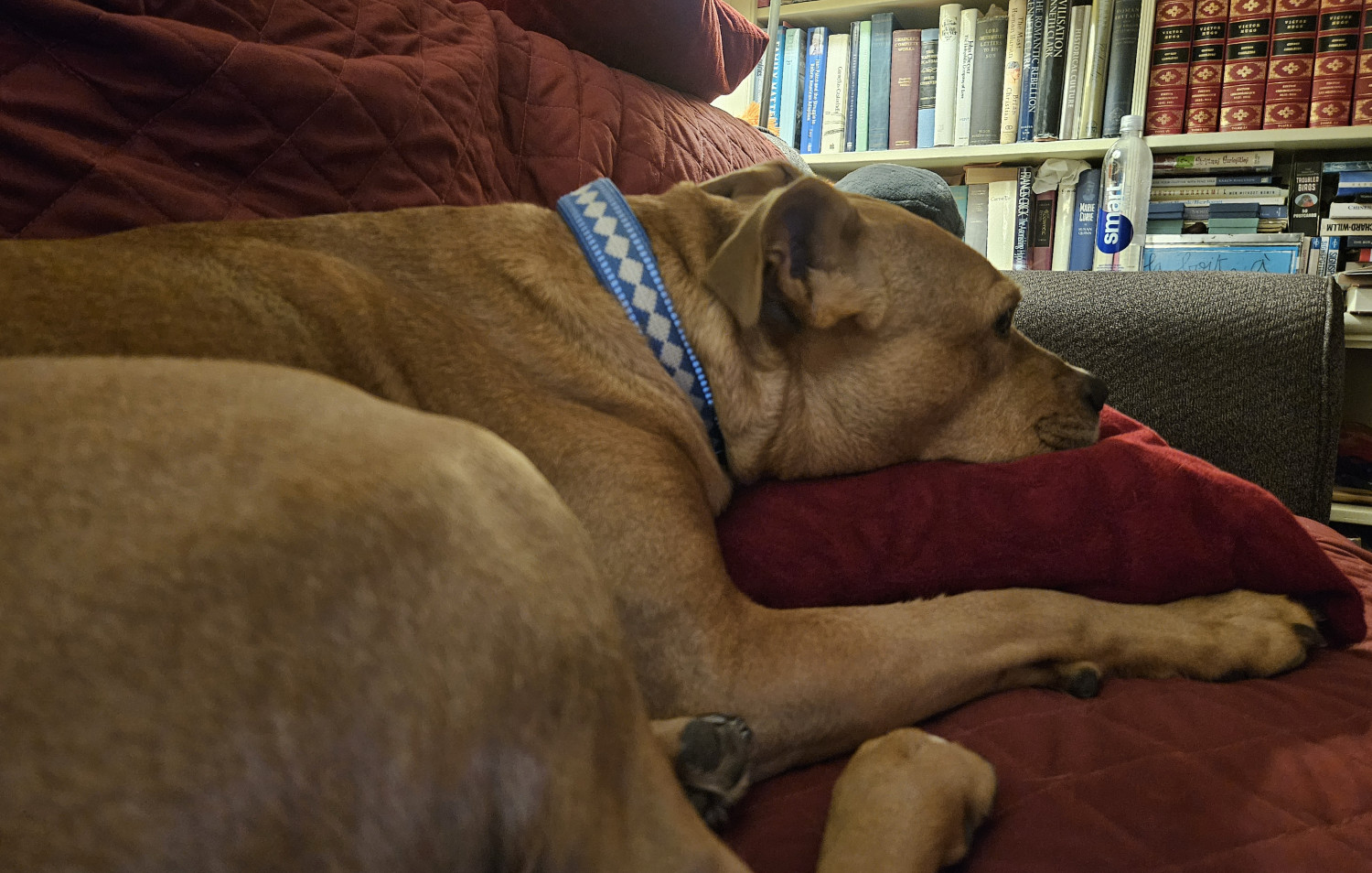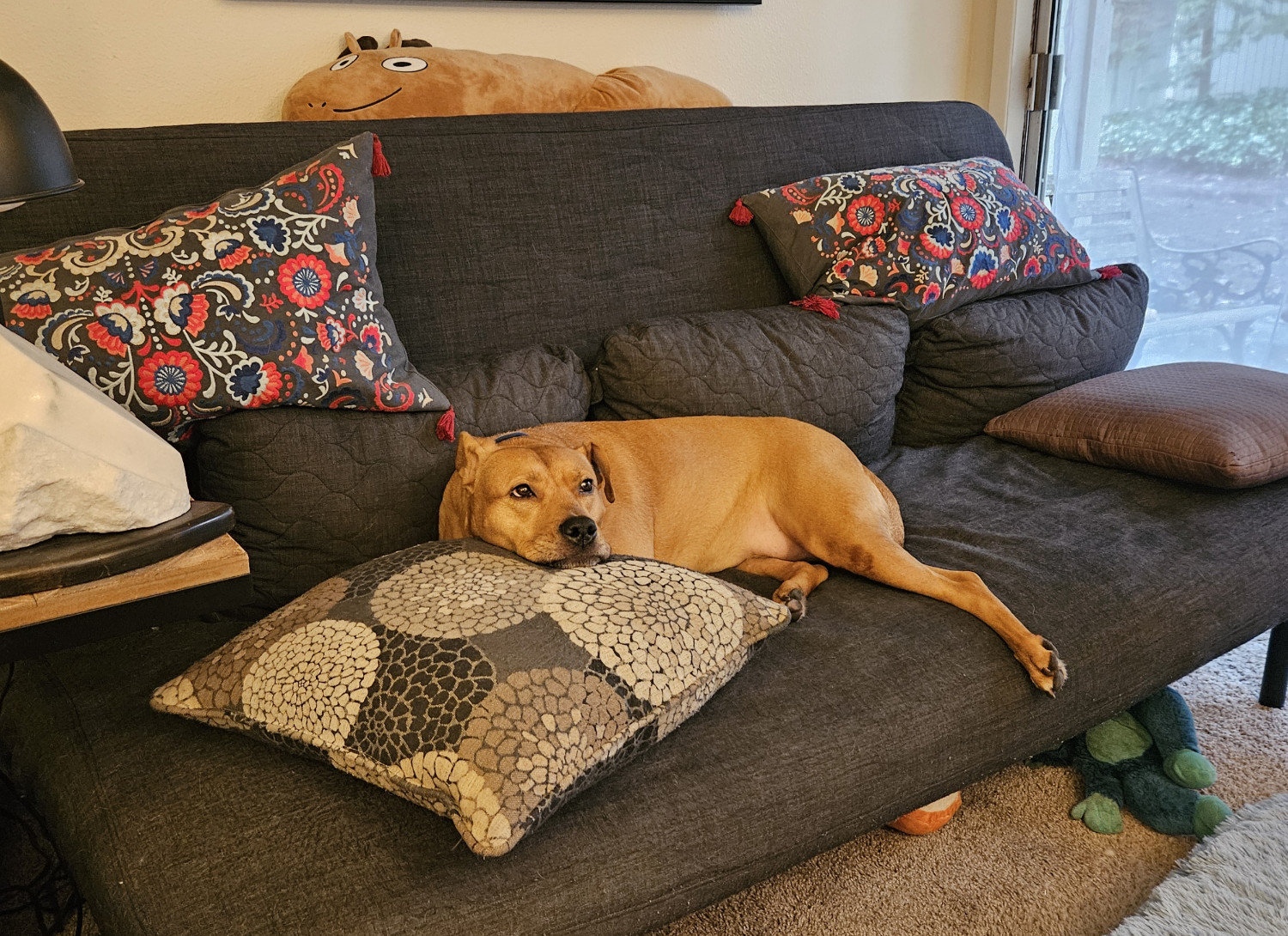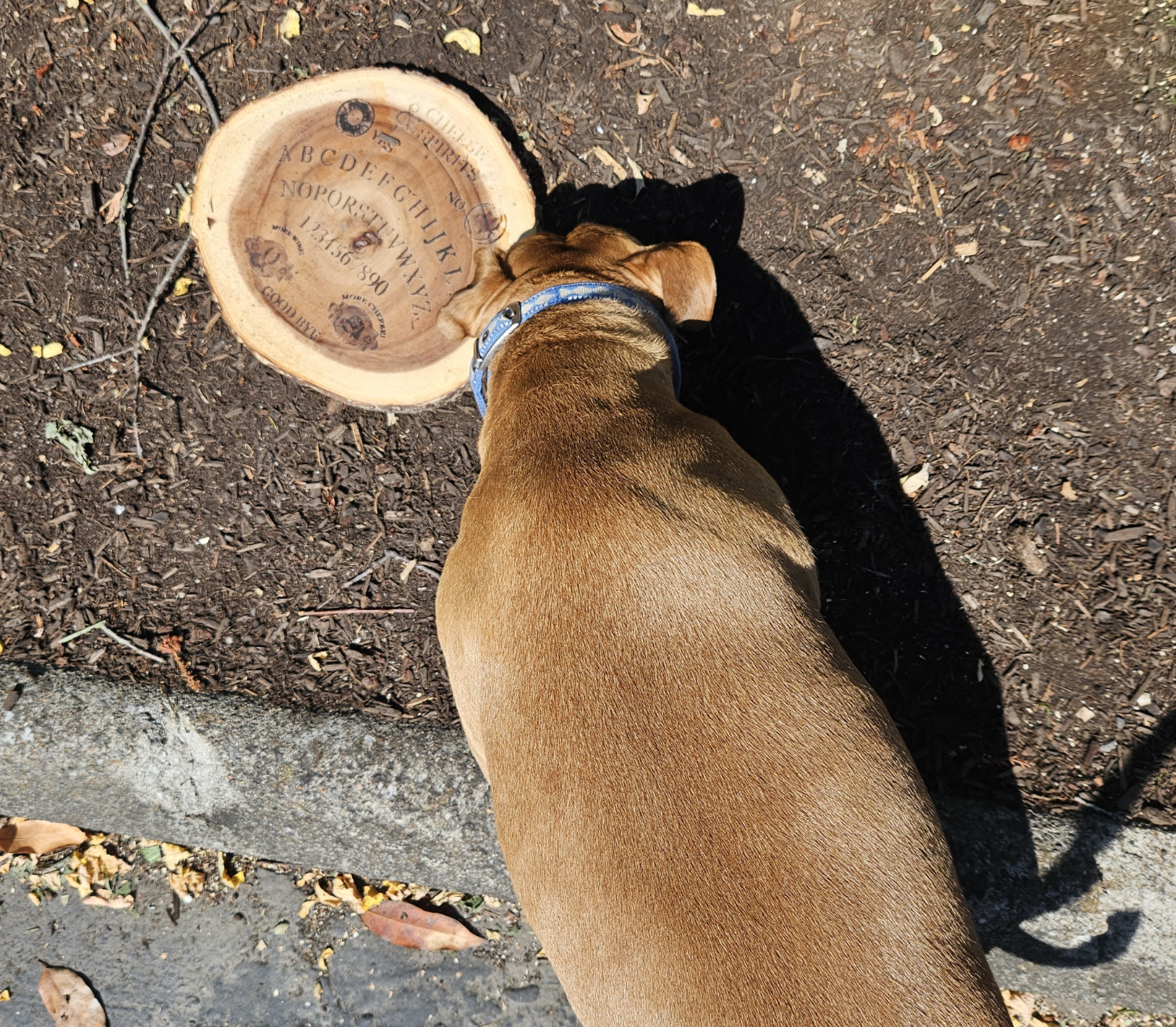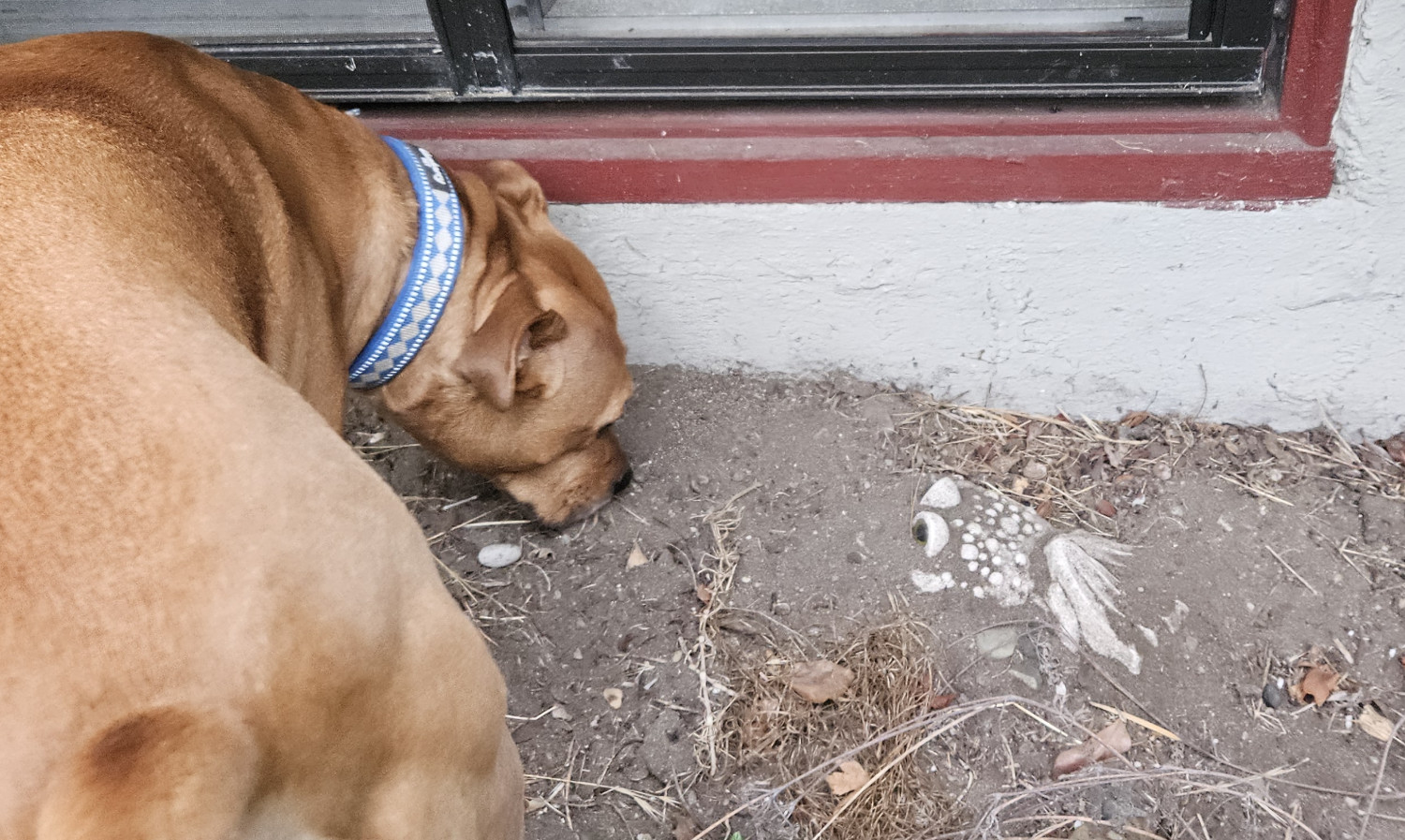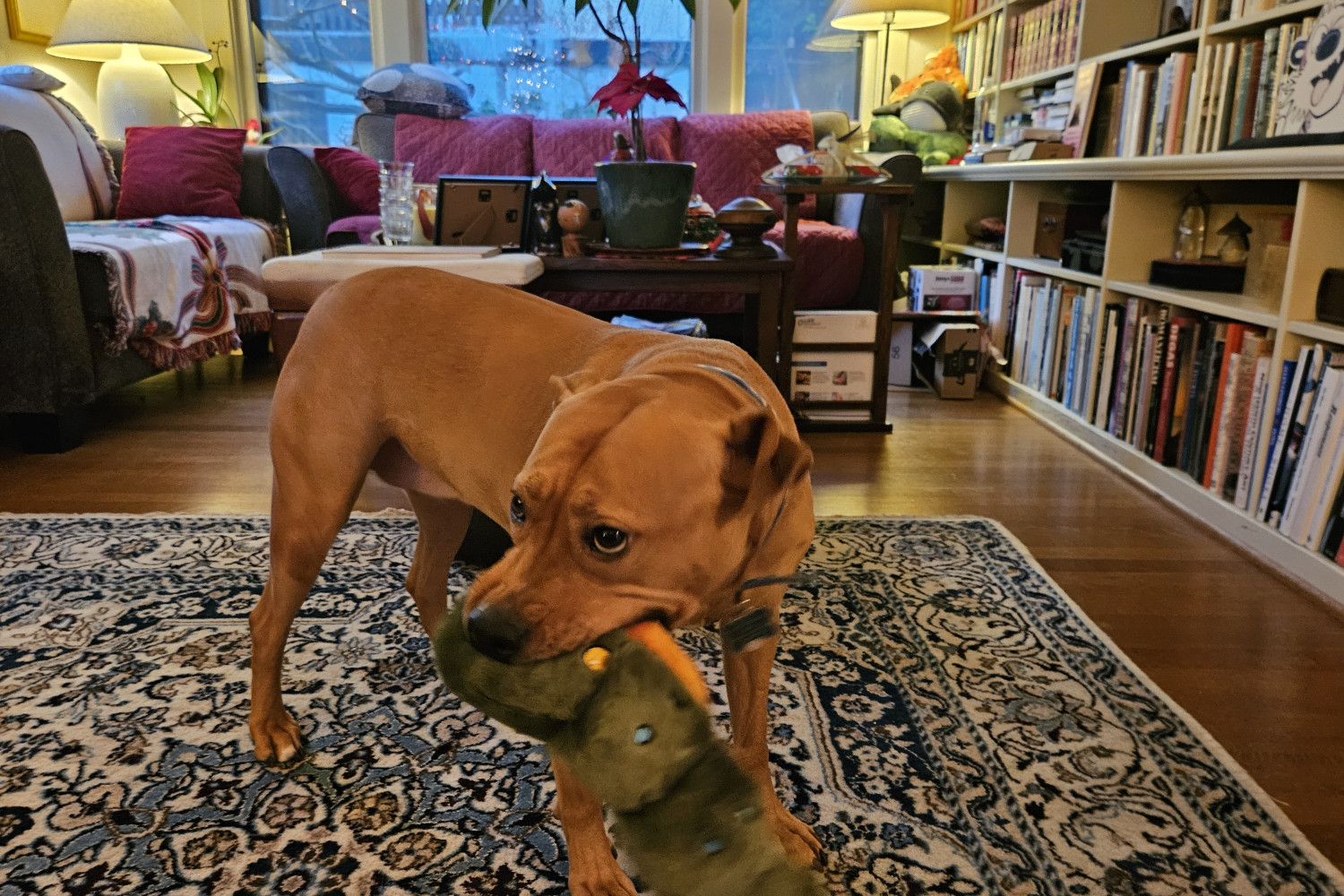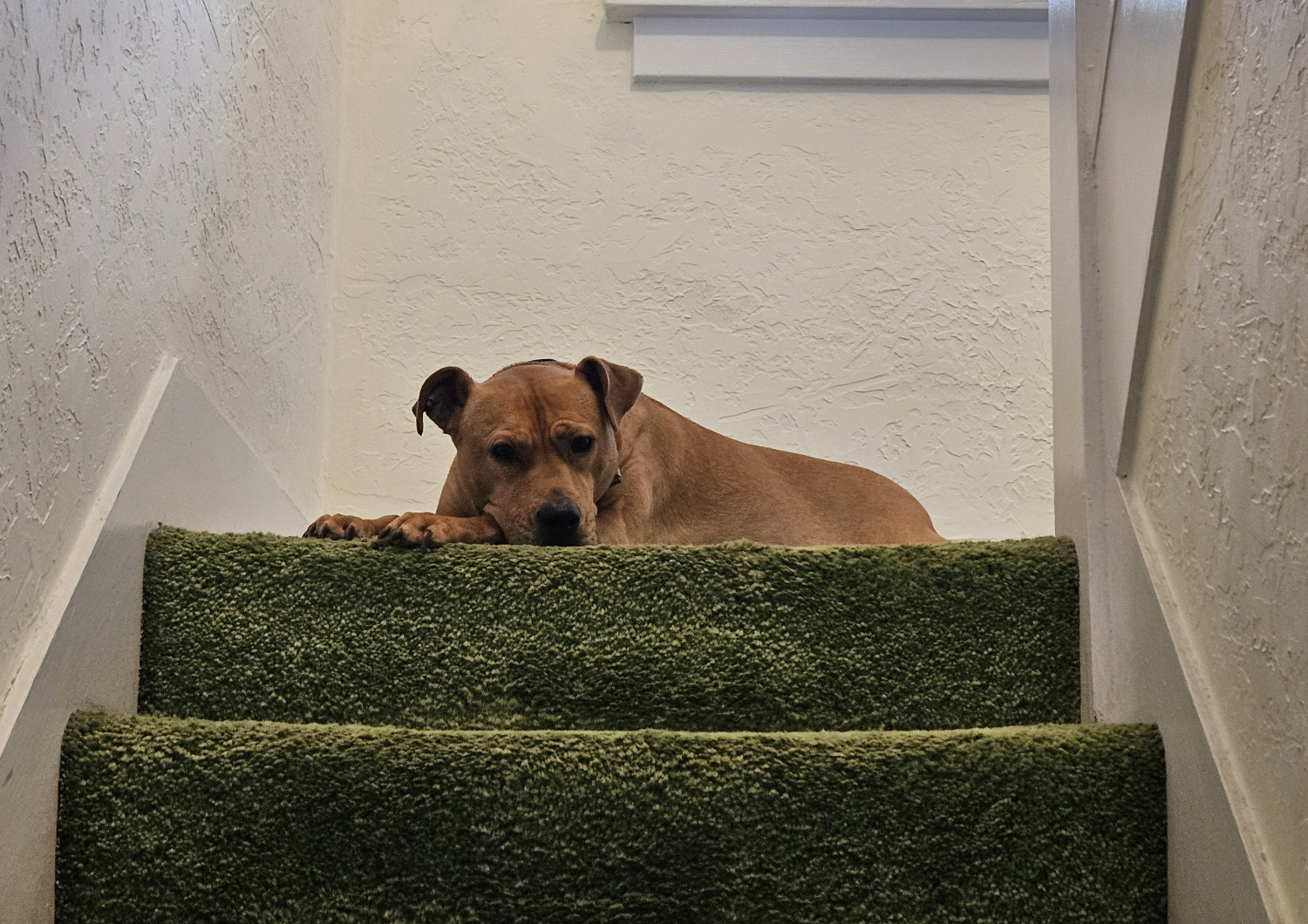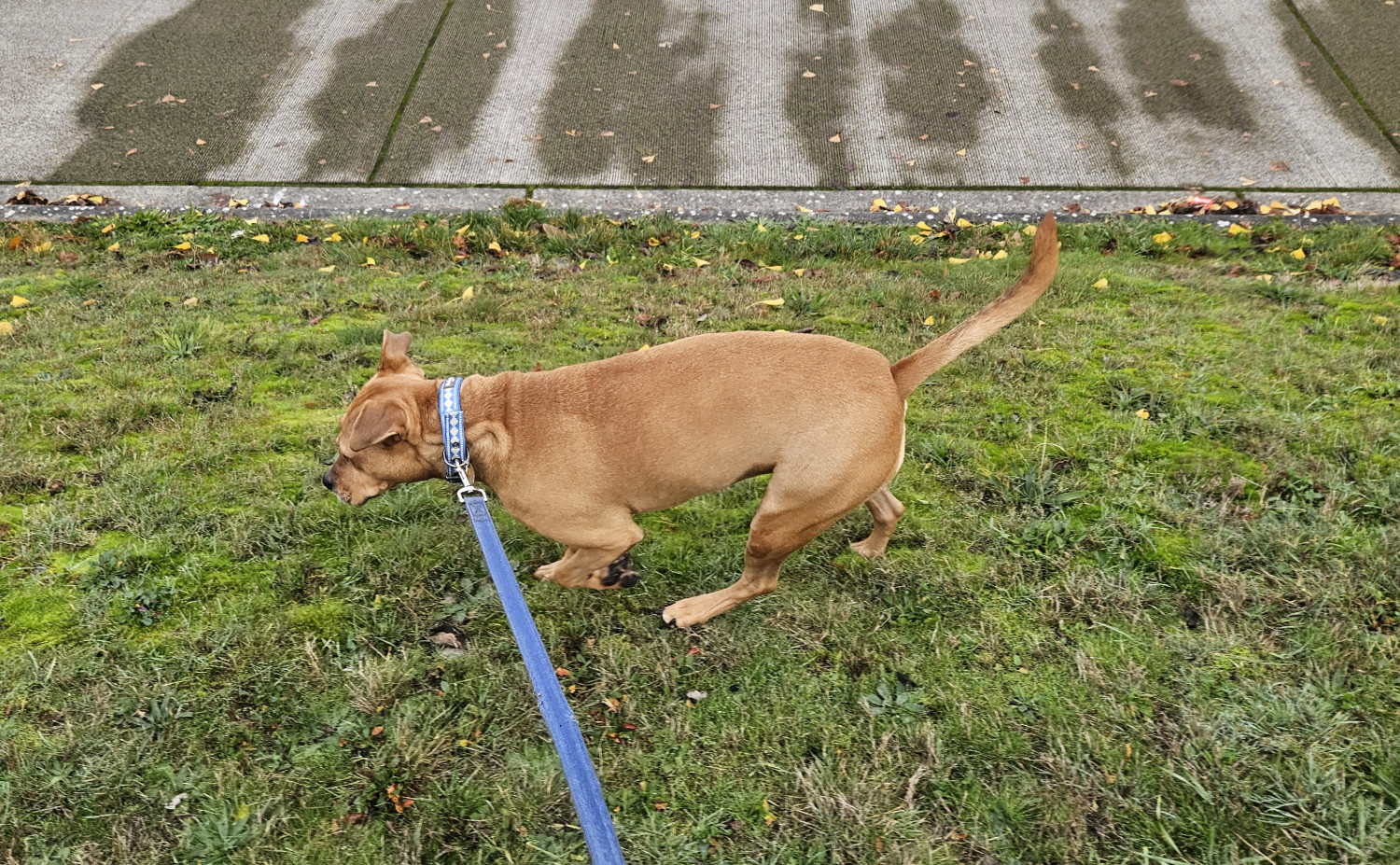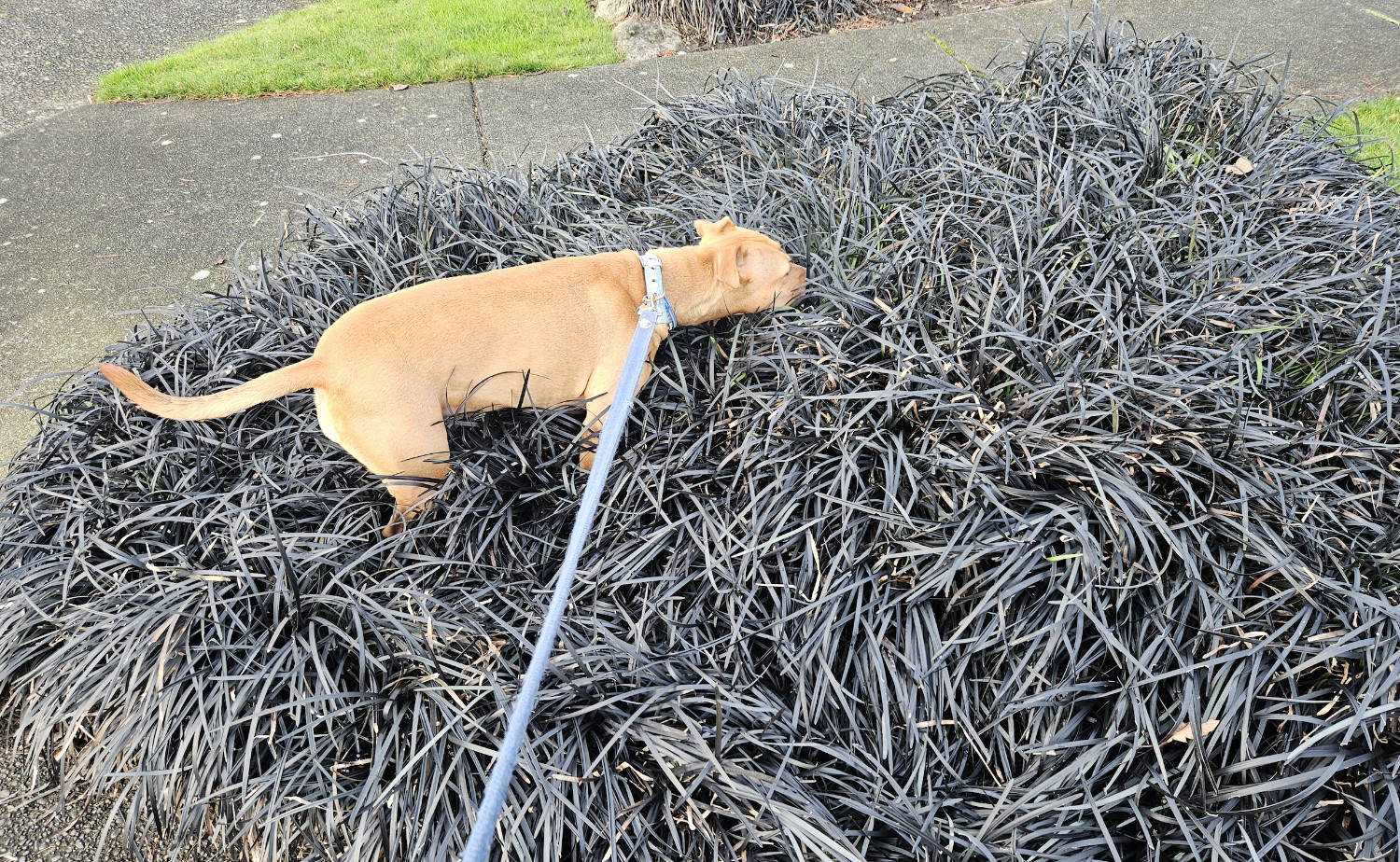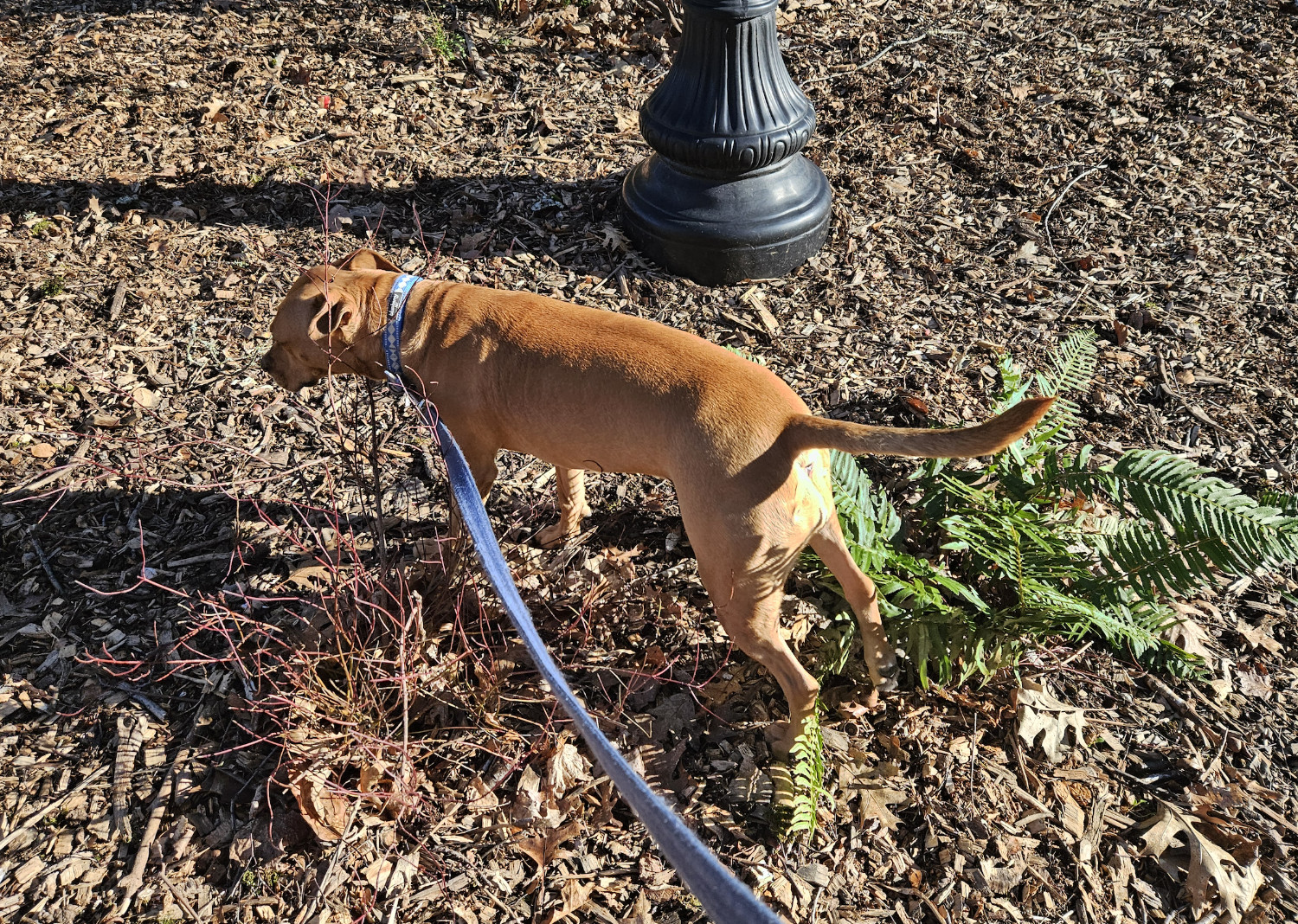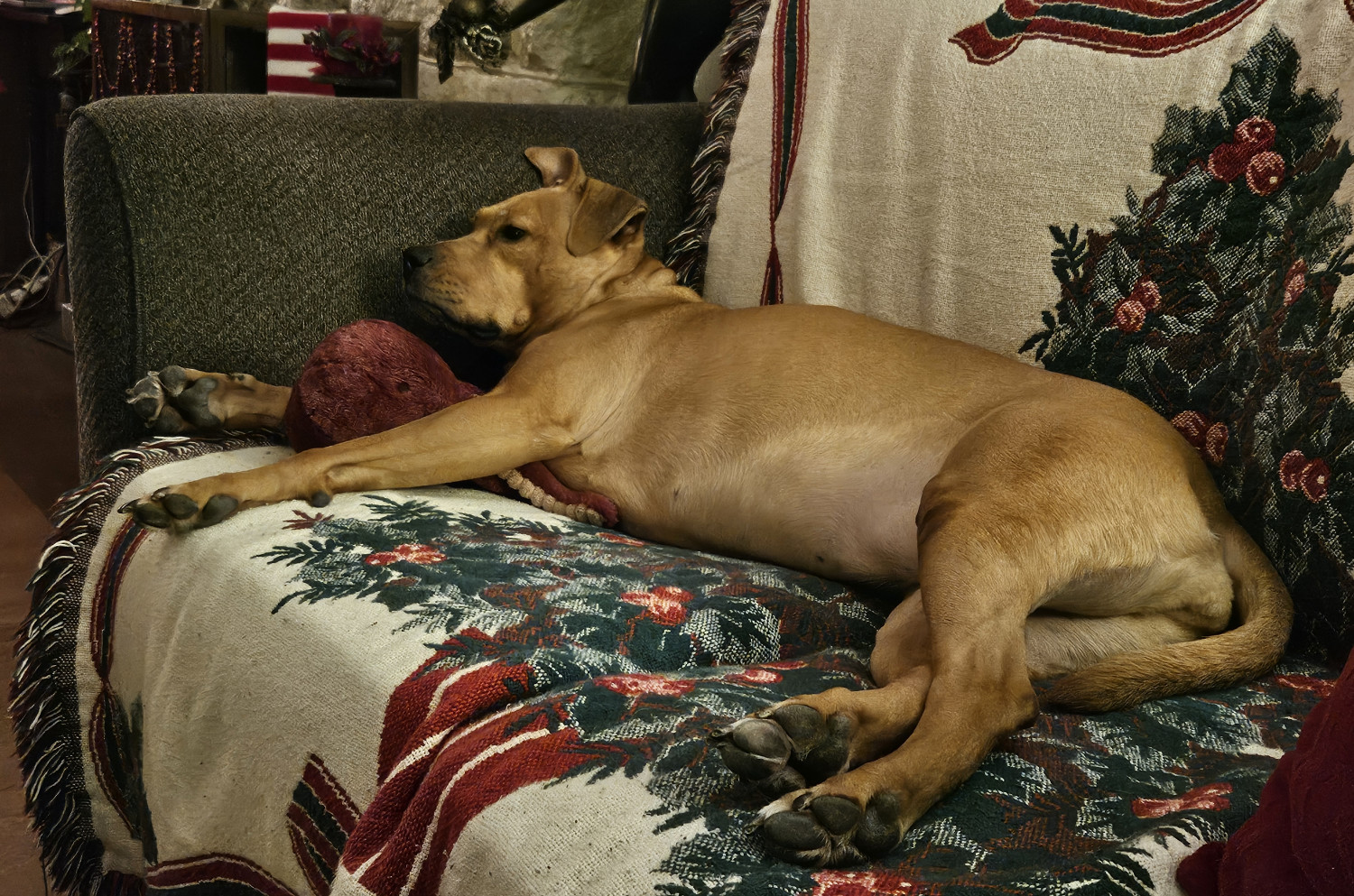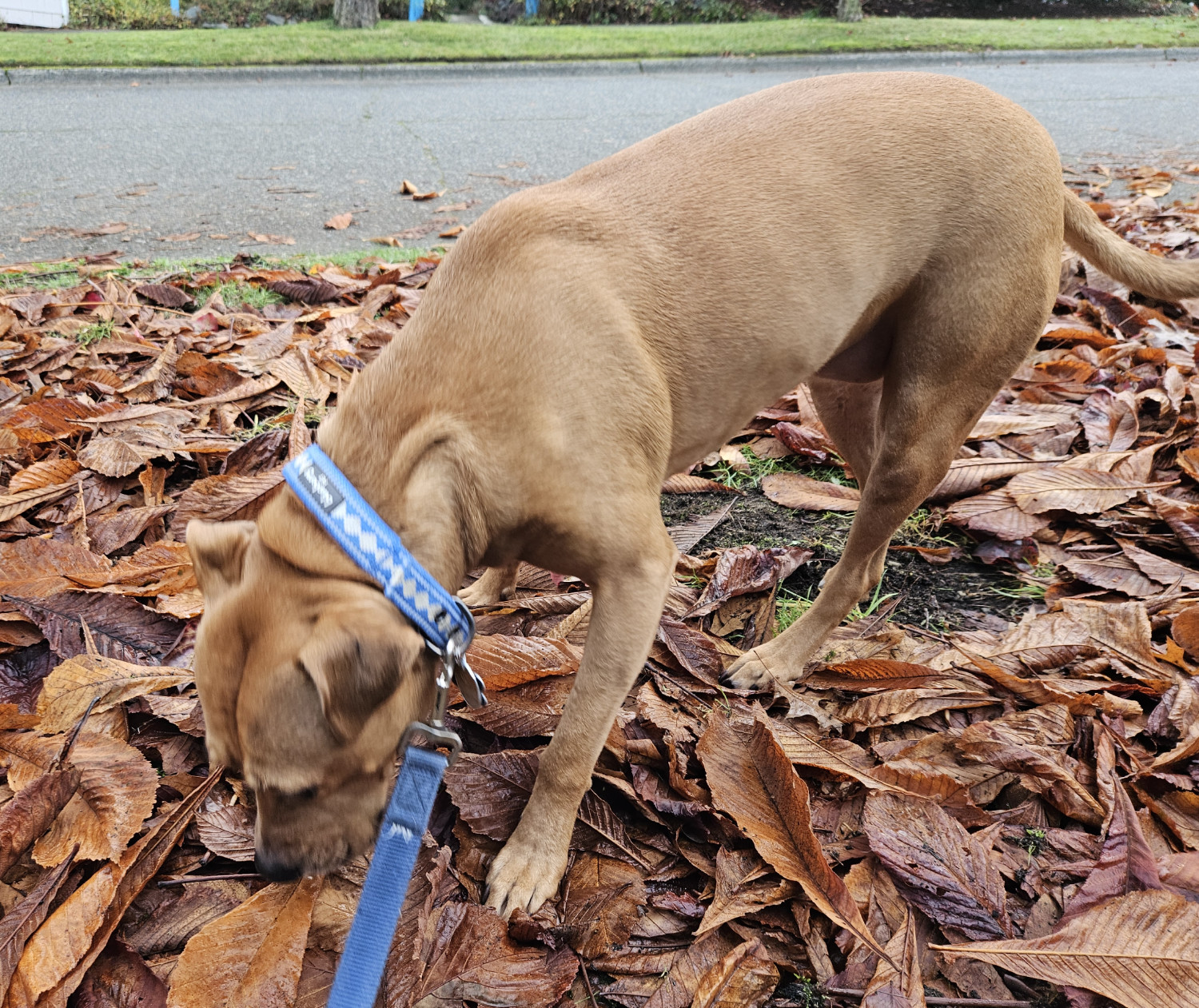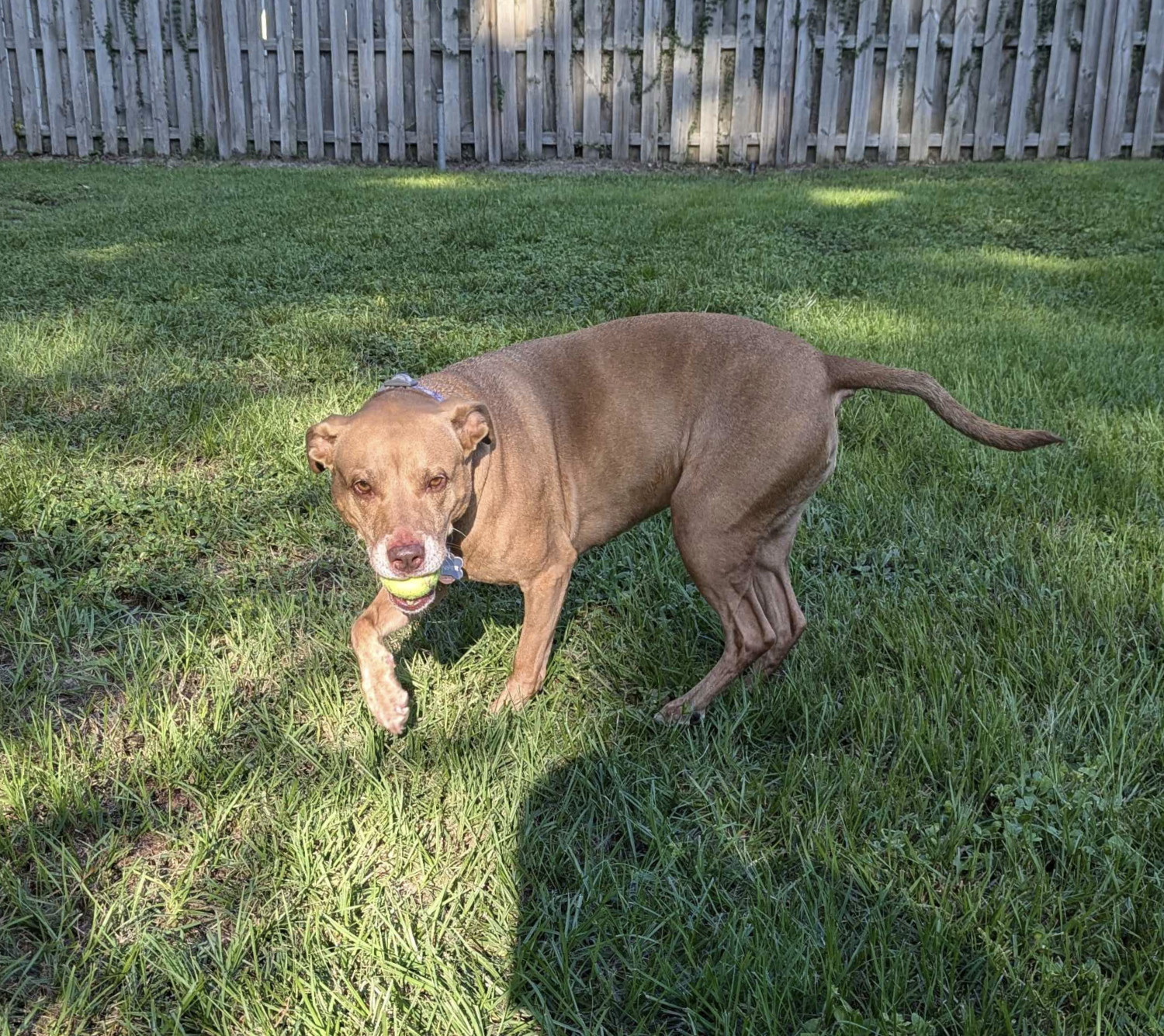Barley, a dog, has her attention called to an ambiguous stone sculpture of an animal by the side of a house, which is buried in loose dirt right up to its eyes. As a teen playing Dungeons & Dragons, there were moments that the basic silliness of the D&D aesthetic went too far. The flail snail, for example, was such an obvious punchline, invented purely as a bit of wordplay, that my teenage self-importance could not abide it, and was offended that it even appeared in sourcebooks. Other monsters were still silly but felt plausible enough (perhaps as the product of some ancient magical research gone awry) that it didn’t trip my alarm bells. I was never wild about the displacer beast, but they didn’t feel like they would turn my game into a Saturday Morning Cartoon. Sitting right on that boundary of fantastical credibility was the bulette, or “landshark.” Its framing as “a shark but on land” is what pushes it over the edge for me, it’s such a Merry-Melodies-ass sales pitch. At the same time, however, high speed burrowing creatures can be pretty scary! So while I never actually used one in a campaign I was running, it wasn’t banished to the Ridicule Zone either. Imagine my surprise, then, when Barley discovered this rare “land gator” (which, upon closer inspection, was actually a concrete bullfrog).
Read more →